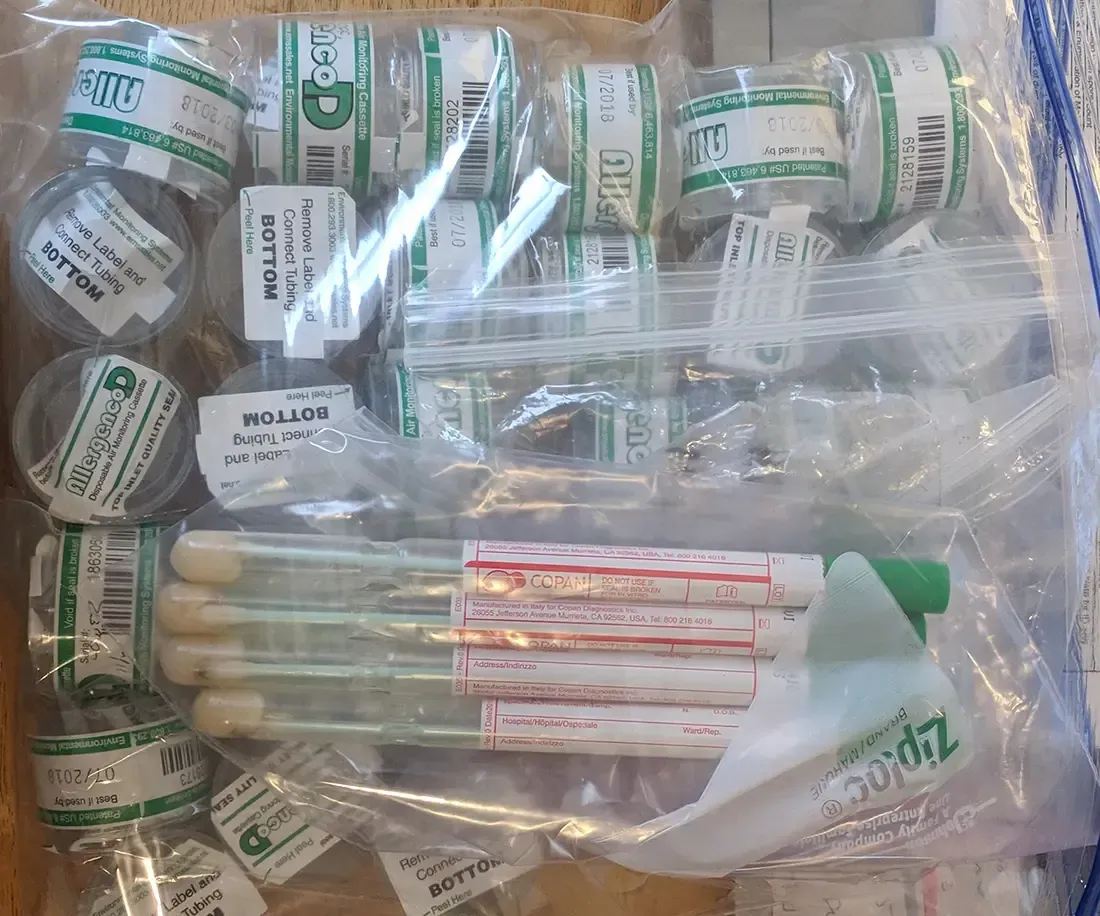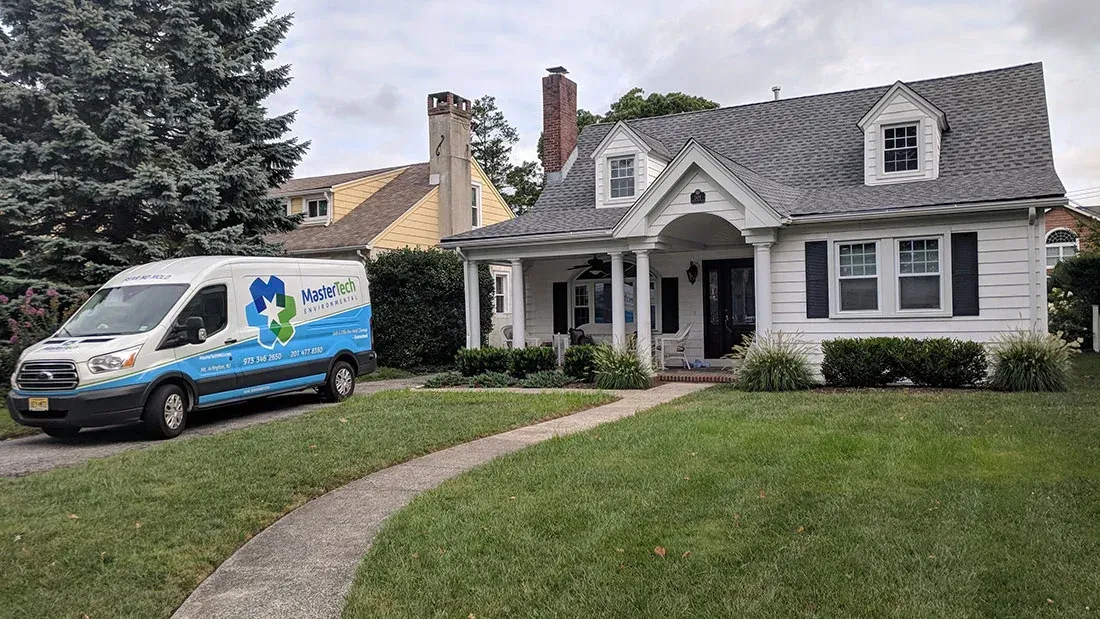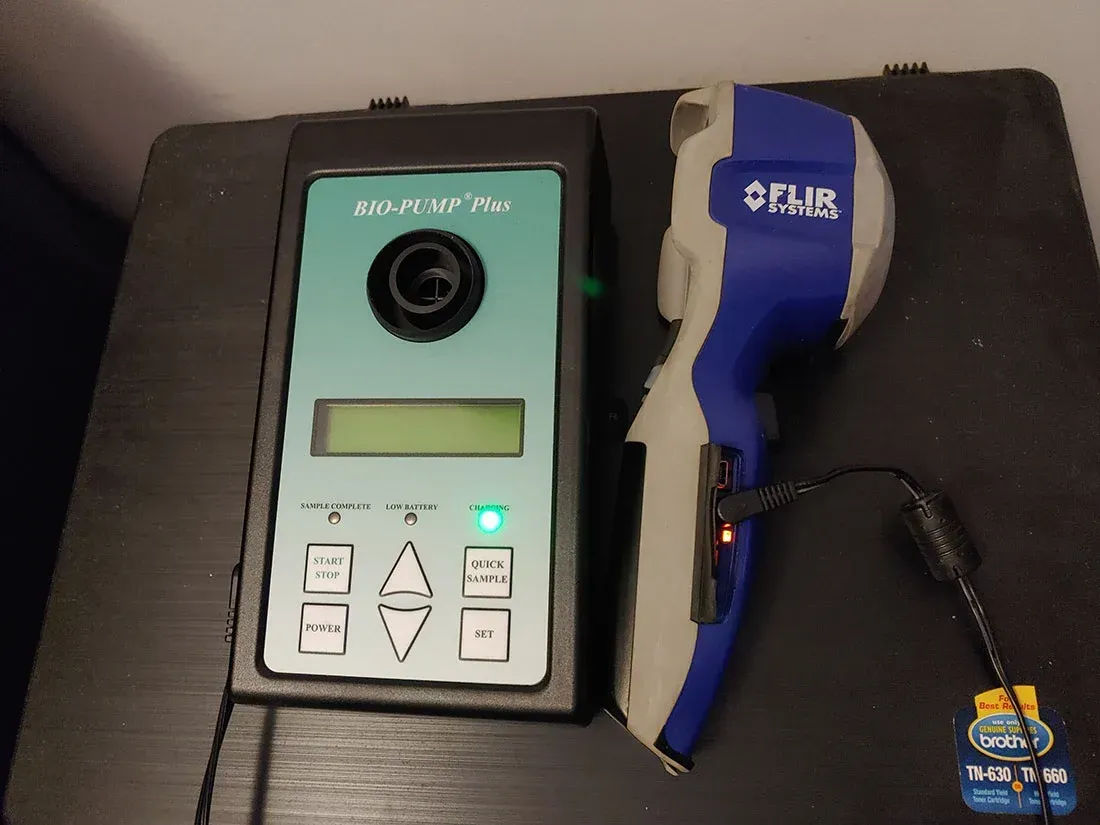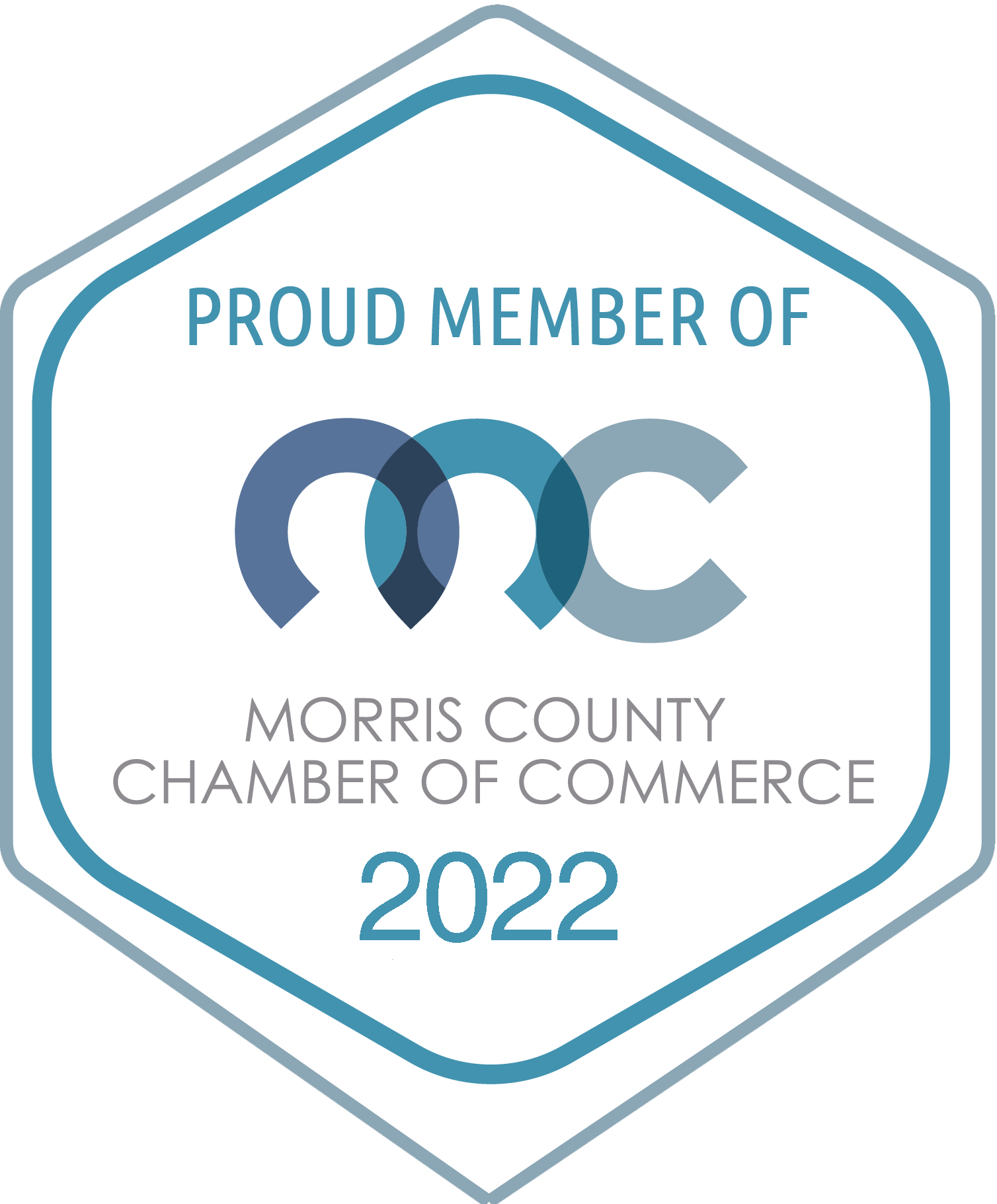When is Mold Sampling Necessary?

Mold sampling is essential for accurately identifying and quantifying mold contamination in indoor environments. This is the case throughout New Jersey, especially in Summit, NJ. It goes beyond mere visual inspections to provide a detailed analysis of mold presence and concentration, which is crucial for effective remediation and ensuring a healthy living space. Visual inspections, while indispensable, cannot stand alone and must be supplemented with sampling and air quality testing.
What is Mold Sampling?
Mold sampling is conducted by licensed and certified mold remediation experts in Summit, NJ. It involves systematically collecting samples from various building parts, including surfaces, dust, and air, to identify mold species and determine their concentrations. This process is pivotal in assessing the full extent of mold contamination, identifying specific mold types, and evaluating whether mold is actively growing. The insights gained from mold sampling are invaluable for understanding the indoor air quality and potential health risks associated with mold exposure.
How is Mold Sampling Done?
Mold sampling can be conducted through various methods, each designed to gather specific information about mold contamination.
1. Air Sampling - This method utilizes devices such as slit impactors, filters, or cyclone samplers to collect airborne mold spores. Air sampling is crucial for assessing the concentration of mold spores in the air, which directly impacts indoor air quality and potential respiratory health risks. Samples are taken from different areas within the building, including suspected problem zones, control areas for comparison, and outdoors to establish baseline levels. These samples are then analyzed to identify mold species and spore counts. For instance, in a study conducted in Atlanta, air sampling revealed high levels of Aspergillus spores in a school's HVAC system, prompting a thorough cleaning and filter replacement.
2. Surface Sampling - Surface sampling involves using tape lifts or swabs to collect mold from visible growth areas. This method helps confirm visible mold presence and assesses the extent of surface contamination. Samples are collected from areas with visible mold growth or suspected contamination. These samples are examined under a microscope to identify mold types and quantify contamination levels. For example, tape lifts from a damp basement wall might reveal significant growth of Stachybotrys, indicating severe moisture issues needing immediate remediation.
3. Bulk Sampling - This involves taking pieces of materials suspected to be contaminated, such as drywall, insulation, or carpeting. Bulk sampling provides a deeper understanding of mold growth within building materials. Samples are collected from materials showing signs of mold growth or water damage. These materials are then analyzed to identify mold species and their growth patterns within the material. In one case, bulk samples from water-damaged ceiling tiles in an office building identified Chaetomium, a mold associated with extensive water damage, necessitating significant structural repairs.
4. Dust Sampling - Dust sampling collects settled dust using vacuum devices or dust traps to analyze for mold spores and other allergens. This method helps assess long-term exposure to mold and other indoor allergens. Dust samples are collected from various surfaces within the building, particularly in areas where dust accumulation is likely. The collected dust is then analyzed to determine mold spore concentrations and identify allergenic mold species. For instance, dust samples from a residential home revealed high levels of Penicillium spores, which were linked to a hidden mold issue behind the kitchen cabinets.
If samples come back negative, you don't have to worry about mold, but if positive, the next steps are mold removal and mold remediation in Summit, NJ.
Why is Mold Sampling Necessary?
Mold sampling is necessary for several compelling reasons.
· Confirmation of Mold Presence:
o Visual Inspection Limitations: Visual inspections can identify visible mold but often miss hidden mold in areas such as behind walls, under floors, or within HVAC systems.
o Role of Sampling: Sampling can detect mold in hidden or inaccessible areas, providing a comprehensive assessment of mold presence throughout the building. For example, air samples from a seemingly clean attic might reveal high mold spore counts, indicating hidden mold growth in the insulation.
· Assessment of Mold Growth Extent:
o Visual Limitations: While visual inspections can identify areas with visible mold, they cannot quantify the extent of contamination.
o Sampling Benefits: Sampling allows for precise measurement of mold spore concentrations in air and on surfaces, helping determine the extent of mold contamination and guiding effective remediation efforts. This is particularly important in large commercial buildings where visual inspections alone may not reveal the true scope of the problem.
· Identification of Mold Species:
o Health Implications: Different mold species pose varying health risks. Identifying the specific types of mold present is crucial for assessing potential health impacts and developing appropriate remediation strategies.
o Detailed Analysis: Sampling provides detailed information on mold species concentrations and potential allergenic or toxic properties. For instance, identifying Aspergillus and Penicillium in a daycare center can help tailor remediation efforts to address these specific health risks.
Importance of Sampling and Air Quality Testing
Sampling and air quality testing are essential components of a comprehensive mold assessment. They offer critical benefits.
· Accurate Diagnosis: Mold sampling is essential for providing comprehensive data that can confirm the presence of mold in suspected areas and quantify contamination levels. This data is critical for offering a clear and accurate diagnosis of mold problems.
· Health Risk Assessment: Identifying mold species and their concentrations is crucial for assessing health risks, particularly for individuals with allergies, asthma, or compromised immune systems. Mold species identification helps tailor remediation strategies to address specific health concerns. Additionally, air sampling provides critical indoor air quality data, helping evaluate potential respiratory risks and guide necessary interventions.
Guiding Mold Remediation in Summit, New Jersey
Detailed sampling results are instrumental in developing targeted remediation plans to address specific mold issues effectively. By identifying all contaminated areas, sampling ensures that thorough and effective remediation efforts prevent future mold growth and associated problems. For more information about mold sampling, you should schedule your testing with the best professional mold testing Summit NJ offers.

When the unexpected happens,
you should only trust the best. ®
Services:
Service Areas:
Mastertech Environmental - Mold Inspection Morristown, Mold Remediation Morris County NJ | Bridgewater | Florham Park | Sitemap




